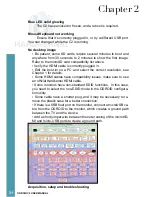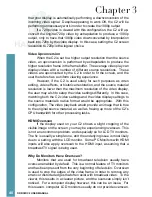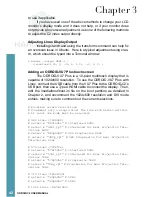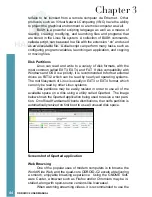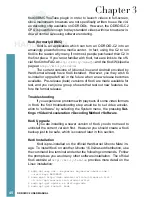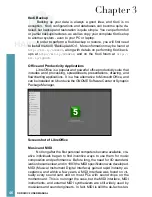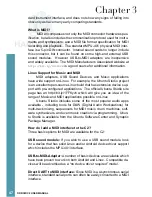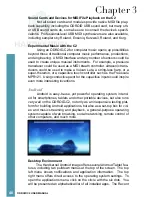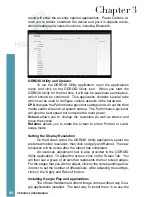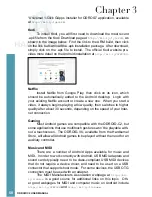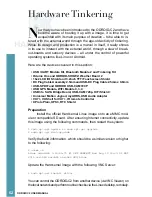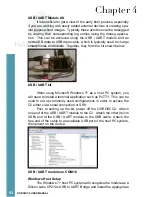
38
ODROID C2 USER MANUAL
able, in order to free up the amount of memory available for the main
controller application. Other specialized environments are also avail-
able from Synaptic Package Manager, including Ubuntu Studio, which
includes many applications that are primarily used for creating and
producing music, videos, digital artwork, and photography.
Kernel
At the heart of the Linux system is the kernel, which is respon-
sible for allowing the desktop environment to communicate with the
hardware through a common interface. Each ODROID has its own
customized kernel code that is modified, tested and published by Hard-
kernel. Programmers may also download the source code from the
official repository at
http://github.com/hardkernel
and make any
modifications or contributions that they wish.
The Linux kernel is compatible with all versions of Linux, so any
operating system that has been compiled for the ARM hard-float ar-
chitecture (ARMHF) may be converted to run on the ODROID by in-
stalling an ODROID-C2 kernel and modifying the boot partition. This
makes Linux one of the most versatile operating systems available,
since it can be configured to run on almost any device, including lap-
tops, desktop PCs, smartphones, and ODROID microcomputers.
Graphical User Interface (GUI)
All versions of Linux offer a command line interface (CLI), and
sometimes include a window manager and desktop environment that
is launched on startup. Most modern Linux systems such as Ubuntu
use a library called X11 to create a windowing environment and provide
graphics libraries so that users may interact with applications using a
mouse. The ODROID-C2 includes a Mali 450 Graphics Processor Unit
(GPU) which is controlled by X11, in conjunction with the Open Graph-
ics Library (OpenGL), in order to render graphics on a 720p, 1080p or
2160p (4K) monitor. ODROIDs use a subset of the popular OpenGL
library called OpenGLES, which is specifically designed to work with
ARM processors, especially smartphones. Applications that are written
for OpenGLES can use low-level graphics functions on the GPU chip
itself in order to quickly and efficiently render graphics, resulting in a
much faster and smoother user experience than using the CPU alone.
720p vs 1080p and 2160p
The ODROID-C2 model supports 2160p, 1080p and 720p mon-
itor configurations, which are video resolutions commonly supported
on LCD TV’s and on many LCD computer monitors. 720p is some-
times referred to as HD, 1080p as Full HD, and 2160p (4K) as Ultra
HD. The following comparison table lists the native display resolutions
Chapter 3








